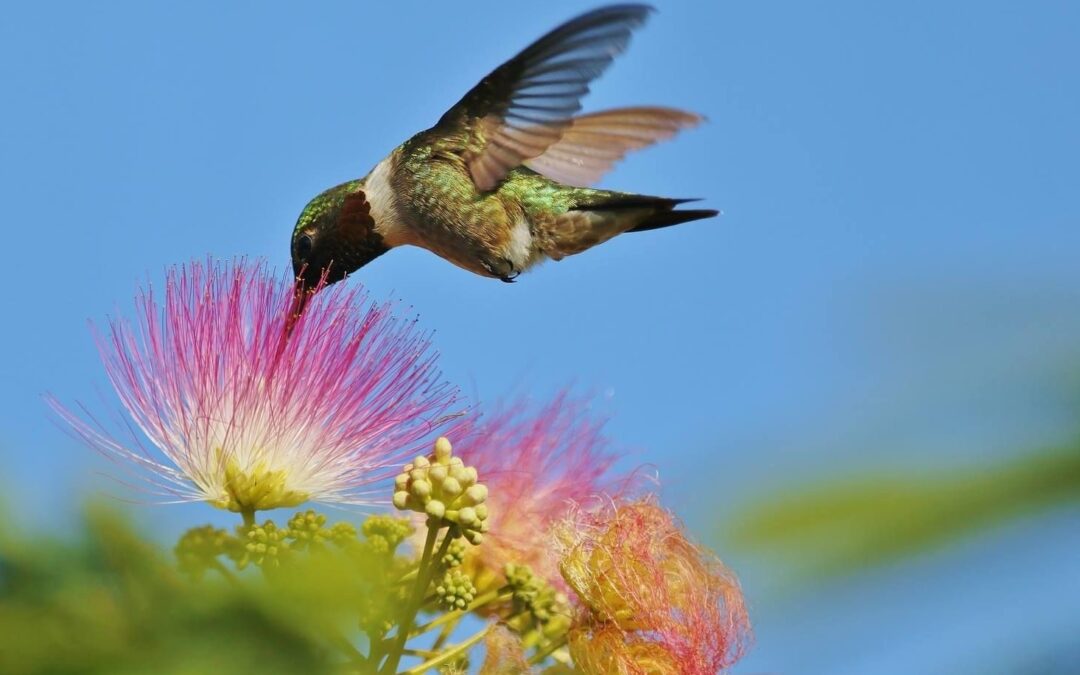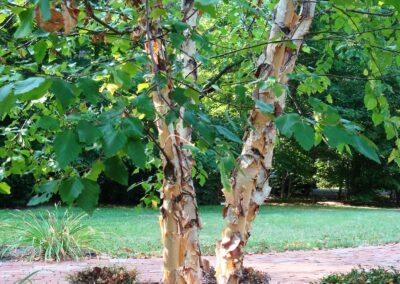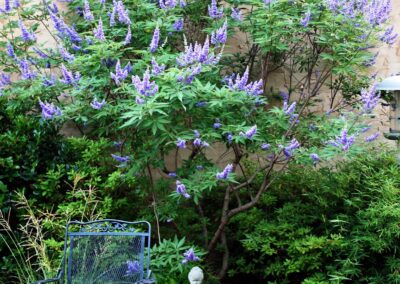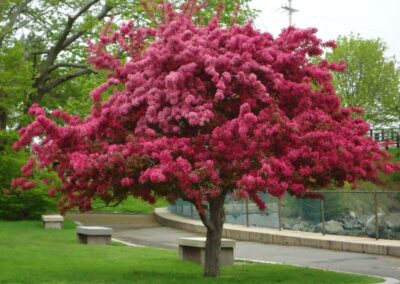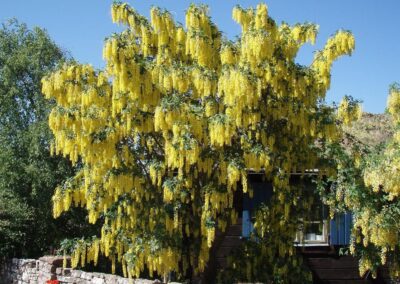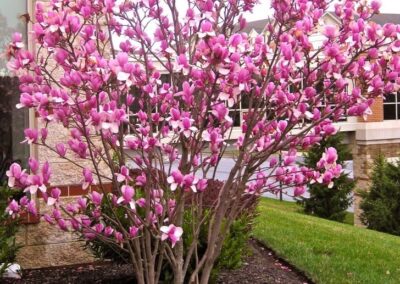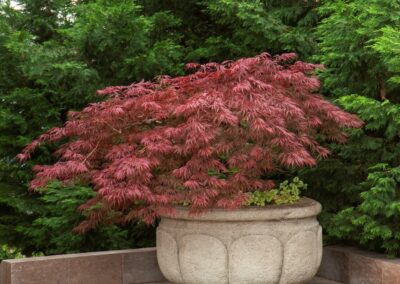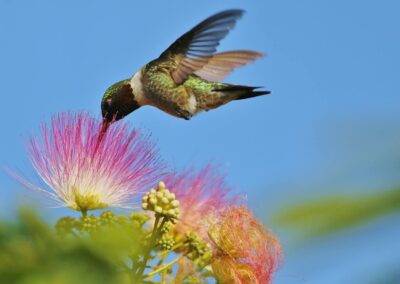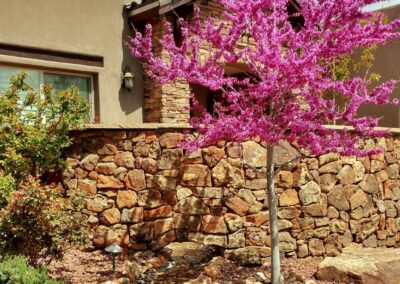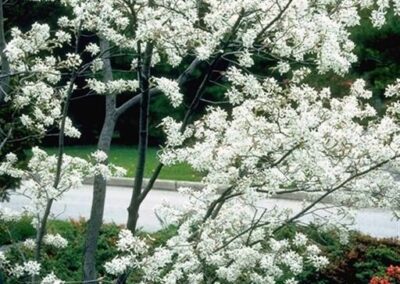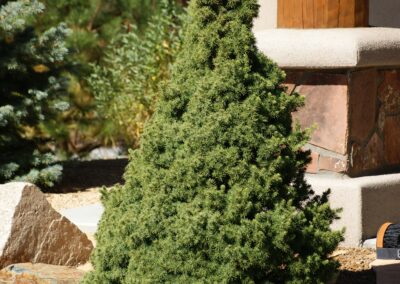Think and Grow Small
By Lisa Watters-Lain, Arizona’s Garden Gal
We don’t all have room for a mighty Maple or the outstretched branches of a native Sycamore in our backyard. After reading this article, you will know about the fantastic few smaller trees that outshine the rest in today’s modern yard. Whether you are looking for shade or spring’s bright colors, these beauties grow to a maximum of 25 feet and require minimal maintenance to look great. Insider tip: If you have a small yard, focus on vertical space—select plants with an upright growing habit. Also, garden in hanging baskets raised beds, and containers to maximize your ground space.
Here are small trees ideal for spring landscapes in tight spaces.
- Alberta Spruce (Picea Glauca). We have many evergreens that make stunning specimen in the yard, but this spruce is number one. The needles are very dense, and it retains a perfect pyramidal shape without pruning. This slow grower—adding only three inches per year—is perfect in containers and raised garden beds.
- Chaste Tree (Vitex). This really grows more like a giant, multi-trunk shrub than a tree, but is super easy to grow up to 15 feet tall. The long clusters of fragrant blue flowers make this tree enticing for both people and butterflies. It’s often compared to the butterfly bush, but. it blooms later and repeat blooms again if you deadhead it (remove spent flowers).
- Crabapple (Malus). Even the smallest yards have room for a crabapple tree. Crabapples typically top at maturity around 12-15 feet tall. They provide a month of spring flowers that attract native pollinators, including honeybees. The flowers are followed by dangling clusters of fruits that are popular with birds.
- Eastern Redbud (Cercis) burst into flower in early spring. A dozen varieties can be found here at Watters Garden Center, but most flowers are a hot pink more than red. Popular with early butterflies, the eastern redbud averages 15-20 feet in height.
- Golden Chain Tree (Laburnum) has a distinctive green bark. The clover-like leaves allow the dappled sun to break through, but the long clusters of brilliant yellow flowers make this tree a showstopper. This tree blooms in late spring and grows 15-20 feet tall.
- Japanese Maple (Acer Palmatum) are beloved for their leaves, which are delicate to the point of being fringed. There are green and red leaf varieties that turn eye-catching shades of red, orange, and purple in the fall. Their average mature height is 15 feet tall. This plant prefers the shady spots in the Arizona landscape.
- Mimosa (Albizia) has a very tropical appearance with sweeping, fern-like leaves. Silt tassel tree is this fast grower’s common name, thanks to its fragrance and thread-like flowers. Hummingbirds and Monarch butterflies fall in love with this 20-foot tree every time.
- Paper Bark Birch (Betula) tend to grow in multi-trunk clumps like aspen. The name comes from the paper white bark that flakes and peels from the trunk as an added attraction. Old trees reach 40 feet tall, but they have a narrow spread at their base, and their canopy allows dappled sunlight to pass through into small yards.
- Saucer Magnolia. The fragrant purple-to-white flowers of this tree appear before the leaves unfurl in the spring. The flowers are 10 inches across, thusly named “saucer.” Saucer magnolias need initial shaping at first planting but never grow over 20 feet tall.
- Serviceberry (Amelanchier) is an early spring bloomer in white related to the rose family of plants. Like crabapples and rose hips, the fruits are edible but tart, and they are very popular with birds. Watters offers several varieties of serviceberry that make excellent landscape plants no more than 20 feet tall.
- Weeping Cherry (Prunus) are covered in flowers from their crown to the tips brushing the ground. These are spring bloomers that look best when given a prominent spot where they can truly show off. Pruning typically isn’t necessary outside of removing dead, damaged, or diseased portions.
Until next issue, I’ll be helping locals choose the perfect tiny tree for their small yard here at Watters Garden Center.
Throughout the week, Lisa Watters-Lain can be found at Watters Garden Center, 1815 W. Iron Springs Rd in Prescott, or contacted through her web site at WattersGardenCenter.com or FB.com/WattersGardenCenter.

